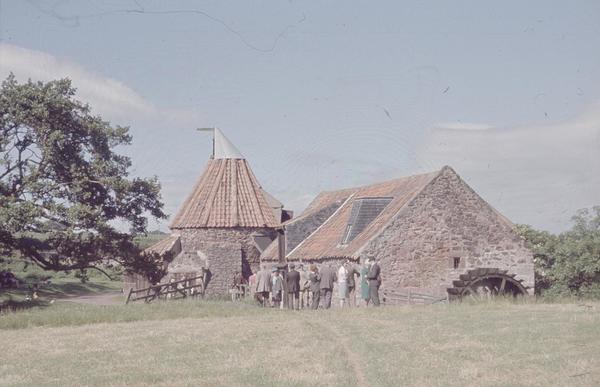Author: Orla Taylor-Davies
I first heard of the Mills Archive when my mum sent me a photo of an article in the local paper about the Archive’s funding from the Heritage Lottery Fund. As a student of History and History of Art, I am always seeking volunteer roles in the cultural heritage sphere, so I contacted the Archive to enquire about the possibility of volunteering over my Easter break. I was excited to hear that a project had been identified for me to work on, the scanning and digital cataloguing of 35mm slides for the Richard Hills Collection.

On my first day, Archivist Nathanael Hodge gave me a tour of the archives; it was fascinating coming face to face with deeds and other such items that were over three hundred years old. Watlington House itself, with the room everyone works in seeming relatively modern but in fact just next to a crooked, slanted part of the house that contains a stone from Reading Abbey, is just as interesting.
My project was then introduced to me. I have taken photos on 35mm film before, but I had never seen such a collection of old fashioned slides. I was taught how to use the Archive database Atom, how to create a series and then log individual slides. At first I found it difficult to decipher the small line written on the top of each slide noting the specific location of the mill photographed and the date the photo was taken, but I was soon familiarised with the handwriting. I found researching the photographed mills really stimulating – sometimes I found myself on obscure websites where one line of information would trigger a whole new line of enquiry that meant that I was able to identify the specific location of the mill.

(Above: Preston Mill, taken in 1969)
Scanning the slides was also insightful in many ways. Editing the photos to make them clearer revealed aspects that helped to identify the mills, for example, a sign on a wall or a particular arrangement of windows. Many of the photos within this collection were taken in the 1960s and 1970s and it was enthralling to see how cityscapes surrounding mills have changed. While searching mills on the internet, often the first result was a restaurant or shop that now inhabits a formerly functioning mill, and I was struck by the change that has taken place concerning milling in the last sixty or so years.
Overall, I have enjoyed my experience at the Mills Archive and am grateful to the staff and volunteers for warmly welcoming me into their workplace. I feel proud to have made a small contribution to their important work and have learned things I never thought I would learn – perhaps knowing that Monet rented out a Berkshire mill will come in handy for a History of Art module next year! This experience has confirmed my desire to pursue a career in archiving and cultural heritage, and I hope to one day return.
(Top image: Shrewsbury Bage’s Mill in 1973)
